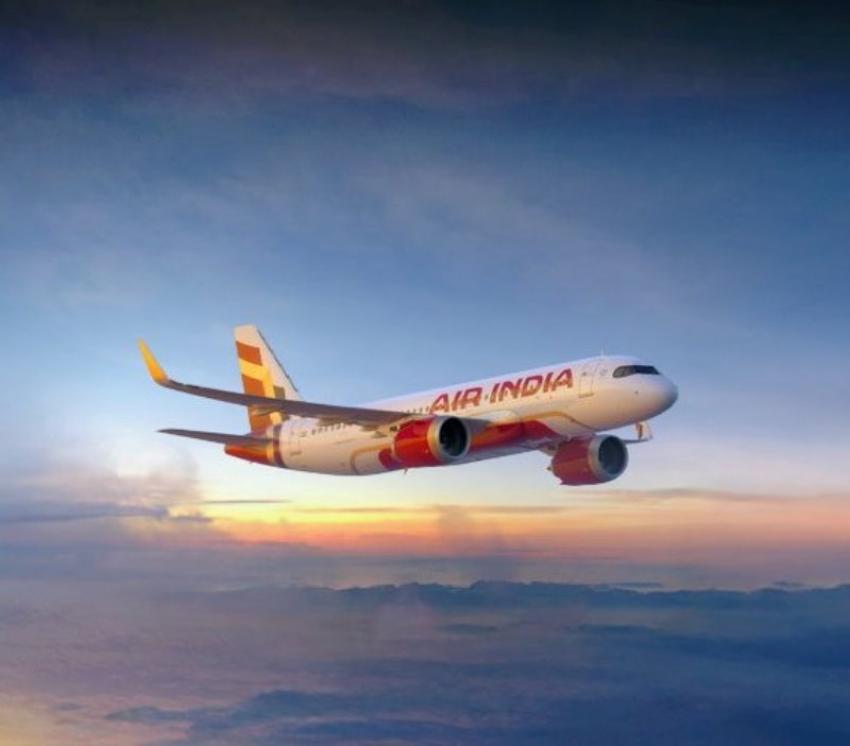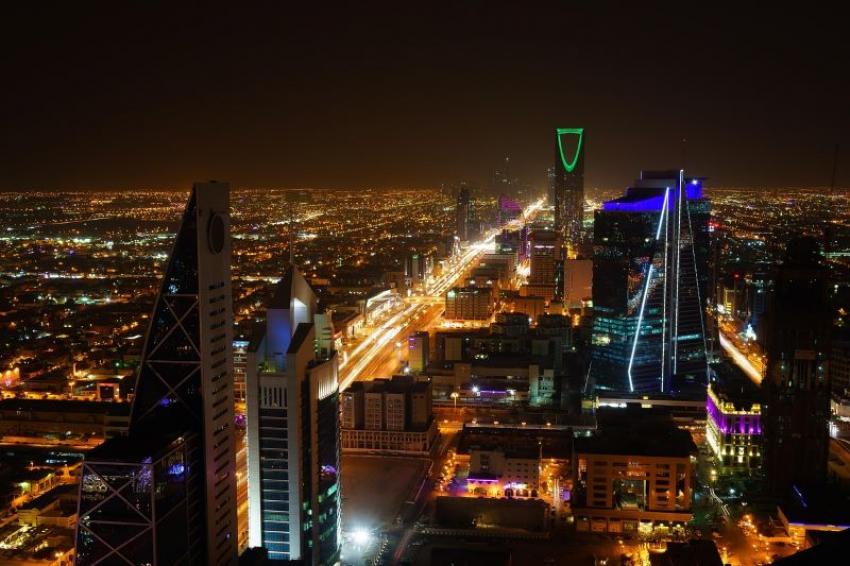NITN | @notintownlive | 14 Aug 2021, 02:25 am
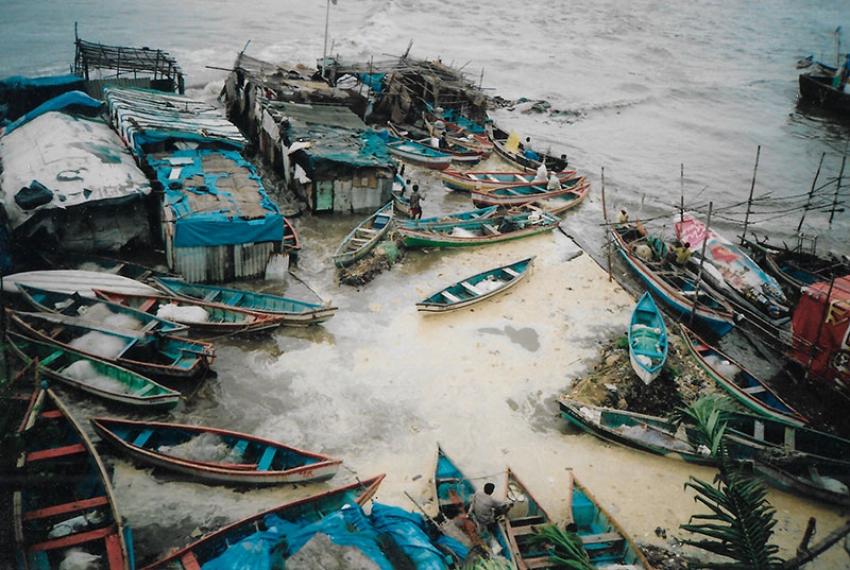 Photography Exhibition
Photography Exhibition
Image Credit Sadashiv Raje 2005 from the section Coastal Ecosystems
Despite its stellar development, Mumbai cannot ignore the knowledge that resides with its earliest inhabitants, the Koli community. A digital exhibition launched on World Indigenous People's Day on Aug 9 now explores Mumbai through the lens of these first residents of a fishing community. Uttara Ganguly reports
Located in the middle of the ‘gaothan’, the large shed with a covered roof can be a key point of your visit if you are on a walking tour in this part of Mumbai on a Sunday.
“You have to be here in the morning if you want to see how the fish market operates,” says the guide for the walking tour to a small group of tourists.
“The smell and the noise takes some getting used to,” she says, and adds with a smile: "The main reason why we bring people here in the afternoon.”
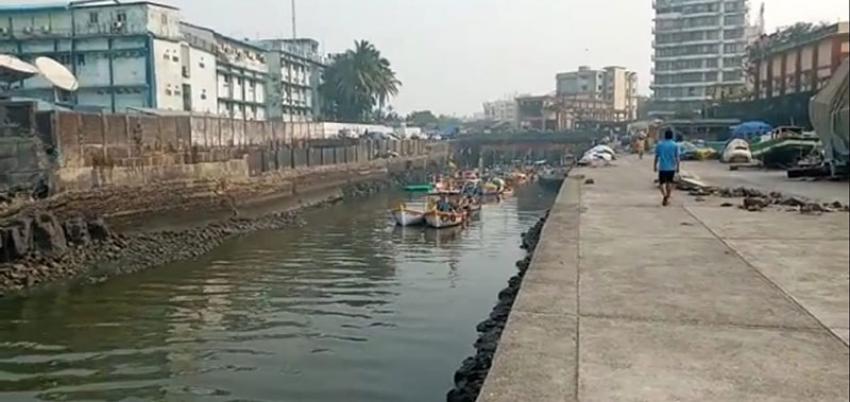
Image Credit Denis Patil 2000 from the section Alterations of the Edges
Well, you are standing in the middle of the Worli Koliwada in Mumbai, one of the few surviving villages of the earliest inhabitants of the area, the Koli (pronounced Kolee).
Despite the world around them changing drastically, the Kolis largely follow their traditional occupation – fishing, and have been able to retain their unique cultural identity.
The walk will take you through the narrow lanes past neat little houses, most with tiled roofs. Occasionally, there will be quaint reminders that the lives of the people were closely linked to the sea – a mariner’s wheel on the wall of a house or a small tulsi plant in a boat shaped holder.
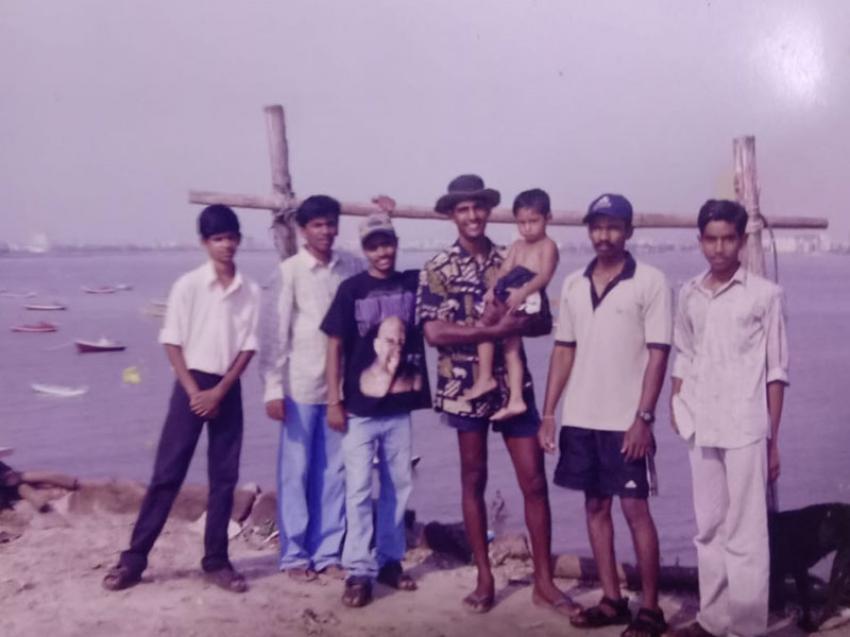 Image Credit Denis Patil 2000 from the section The Community and Their Livelihood
Image Credit Denis Patil 2000 from the section The Community and Their Livelihood
Walk past old temples, including the 'Papmochan Temple' in the middle of the urban village, past churches, grottos and crosses dedicated to Our Lady of Velankanni, and then descend a flight of stone steps leading to the jetties and the sea, where colourful fishing boats bob among the waves.
In between you can stop to talk to some of the friendly residents who eagerly share information about their lives, the perils of fishing in the sea, the dwindling catch.
Interestingly, the name Mumbai comes from Mumba Devi, the patron goddess of the Koli community.
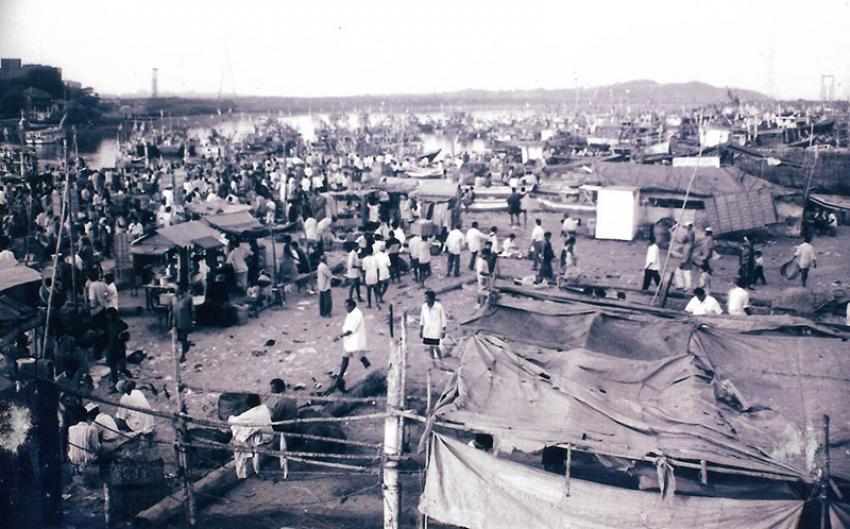 Image Credit Prithviraj Chandi 1990 from the section Alterations of the Edges(2)
Image Credit Prithviraj Chandi 1990 from the section Alterations of the Edges(2)
Your walk ends at the little known Worli Fort, which was likely raised as a watch tower in 1675. The Bandra-Worli Sea Link looms in the distance.
While a walk through a Koli village may not be possible now owing to the pandemic situation, you can take a deep look into the life and times of the Koli community through a virtual exhibition which has been curated and developed by Bombay61 Studio, in collaboration with the Ministry of Mumbai’s Magic, a collective of Mumbaikers. It is hosted by The Heritage Lab, a digital media platform connecting citizens to cultural heritage through stories.
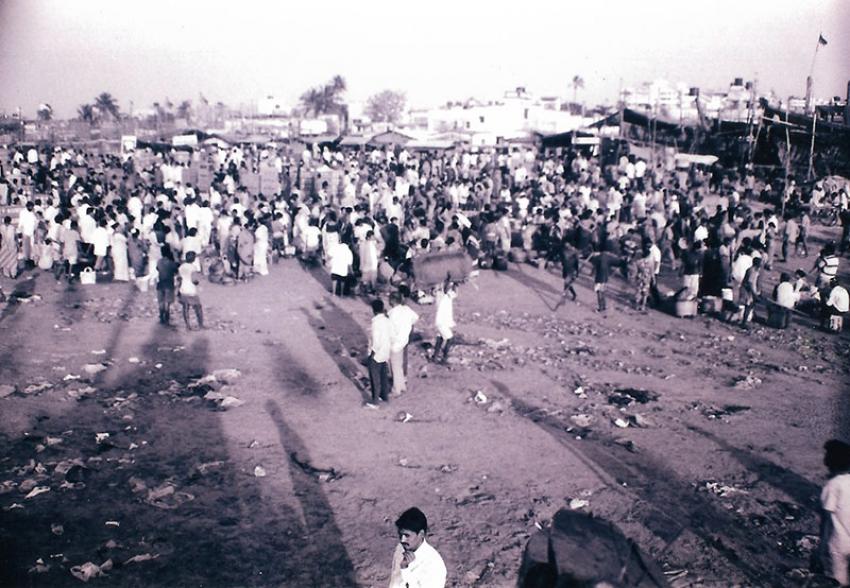 Image Credit Prithviraj Chandi 1990 from the section Alterations of the Edges
Image Credit Prithviraj Chandi 1990 from the section Alterations of the Edges
Named ‘Through the Eyes of the Kolis: A reflection on Mumbai’s past, present and future’, the show is part of the Biodiversity by the Bay campaign.
While the exhibition may be Mumbai specific, the lesson it imparts holds good for many Indian cities which have been growing in scale with scant regard to the ecosystem that once existed here, ignoring the collective knowledge of the original communities.
The photography exhibition explores various aspects of the city of Mumbai through the eyes of the Koli community.
.jpg)
Image Credit Prithviraj Chandi 1990 from the section Alterations of the Edges(3)
The exhibition contains a series of archival photographs from the 1950s - 2000s which have been sourced from the Koli community by Bombay61 Studio, an experimental think tank working across architecture, urban design and public participation.
Regarded as the first residents of Mumbai, the Kolis livelihoods are deeply intertwined with the rivers and the sea that they inhabit.
This exhibition presents a pictorial narrative of the generational history of the Kolis and the deep relationship they share with the natural environment.
.jpg)
Image Credit Prithviraj Chandi 1990 from the section Coastal Ecosystems
According to the collaborators, the Kolis had been witness to rampant urbanisation in Mumbai and the rapid degeneration of its water bodies, impact of climate change on the city's coastline and have had to face the immediate repercussions.
The exhibition explores these physical, socio-cultural and ecological transformations through four sections:
The Community and their Livelihood - a series of images explore how the culture and traditions of the community are tightly interlinked with their occupation and their traditional knowledge of sustainable fishing methods.
.jpg)
Image Credit Sadashiv Raje 1958 from the section The Community and Their Livelihood(2)
The photographs will highlight how rapid urbanisation and instant gratification for profits in recent years has affected the community, even forcing many to leave Mumbai altogether.
The Coastal Ecosystems - an exhibition exploring the impact of climate change, developmental pressures, ecological deterioration and changing aspirations on the livelihoods of the Koli community. Images document the changing coastal ecosystem as fishermen are forced to go deeper into the high seas for their catch.
Alteration of the ‘Edges’ - due to expansion and construction along the coastline, the Koliwadas offered a cheaper cost of living for migrants that resulted in overpopulation of Koliwadas and a fight for resources. As a result, a slum narrative has been associated with the Koliwadas of late. These photographs depict the loss of belonging and cultural identity this has created across the Koliwadas.
.jpg)
Image Credit Sadashiv Raje 1958 from the section The Community and Their Livelihood(4)
Mapping the Histories - after extensive conversations with the older generation of Versova Koliwada, Bombay61 Studio has developed a community map that documents the historical narratives regarding the Koli’s relationships with the natural resources. This map will complement the photo archives and is an inclusive approach that documents the past as the Koli’s have witnessed it, taking into account the community’s voices.
Say Jai and Ketaki of Bombay61 Studio: “Environmental degradation in Mumbai has a sense of normalcy to it. Most casually we refer to water bodies as nullahs (drains), something that is dumped with sewage waste, both domestic and industrial.
.jpg)
Image Credit Sadashiv Raje 1975 from the section Alterations of the Edges
"These were once vibrant water channels (creeks and rivers) that have been ignored over time and reduced to a thick sludge. A generation of Kolis have seen the degeneration of what was once a healthy environment alongside which they flourished.”
The exhibition relives the glory days of the community and how they are placed today in a bid to understand the transformation of the coastal systems of Mumbai, said the duo. The exhibition hopes to reverse the amnesia of the urban youth and strengthen their relationship with the surroundings.
.jpg)
Image Credit Sadashiv Raje 1975 from the section The Community and Their Livelihood
Medhavi Gandhi from The Heritage Lab says that they believe that culture and heritage is community-created, and community-owned, and therefore the responsibility of the community and citizens to preserve/ protect.
The Heritage Lab (THL) is a digital media platform connecting citizens to cultural heritage and museums through stories, public engagement programs, campaigns and free-access resources.
“We’re really looking forward to seeing the conversations inspired by this exhibition,” says Gandhi.
.jpg)
Image Credit Sadashiv Raje 1982 from the section The Community and Their Livelihood(3)
Mumbai’s Ministry of Magic (MMM) is a platform to unite citizens and showcase their collective action, mobilizing them to draw the attention of the local government to prioritise protection of Mumbai’s biodiversity hotspots, green spaces and its inhabitants.
.jpg)
Image Credit Sadashiv Raje 1980 from the section The Community and Their Livelihood(5)
Arpita Bhagat from MMM says, “The Kolis have witnessed the evolution of Mumbai's ecosystems more closely than any other inhabitants of this island city. Their intimate relationship with the sea for survival has also meant that they are the first to adapt and respond to the effects of the climate crisis.
"We want to invite Mumbaikars to experience this relationship through visual narratives and learn lessons of resilience from the Koli community.”
.jpg)
Image Credit Wilson Koli 1990 from the section Alterations of the Edges
You can see the exhibition here (https://www.theheritagelab.in/mumbai-koli-archives/)
- I escaped to Pachmarhi — what I found in the queen of Satpura left me spellbound
- Air Canada just ranked the Best New Restaurants of 2025 - And the Top Spot isn't who you think
- Rediscovering Arunachal's Monpa Cuisine: One Woman’s Millet Momo Revolution
- Discovering Heritage: A visual journey through Odisha crafts museum Kalabhoomi
- From kebabs to biriyani: Lucknow gets UNESCO honour for its royal cuisine
- Delta takes Spanish flavours to the skies
- Kolkata’s iconic Kathi Roll among world’s top 10 wraps: TasteAtlas
- Yellow Taxis and the Colours of Puja
- Starbucks introduces special Durga Puja inspired menu for Kolkata, with an attractive discount offer too
- Rosé All Day and Coastal Vibes: Dining at Chicago's The Hampton Social – River North
Tata Group-owned Air India on Sunday announced the reinstatement of its codeshare agreement with fellow Star Alliance carrier, Air Canada, to offer more flight options for travellers and boost connectivity between India and Canada.
Starting Nov 16, 2025, IndiGo will operate direct flights between Bengaluru and Riyadh, expanding its network to Saudi Arabia.
American Airlines will launch new seasonal service between New York (JFK) and Edinburgh, Scotland (EDI) in March 2026, expanding its international network.



